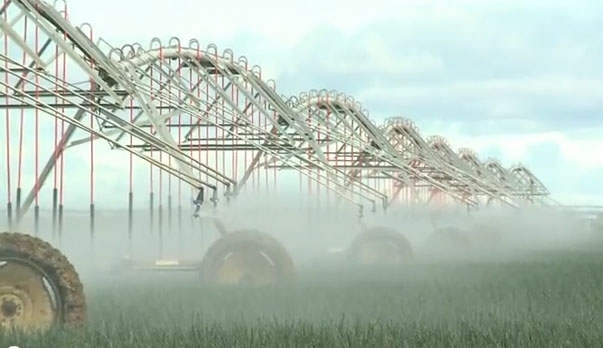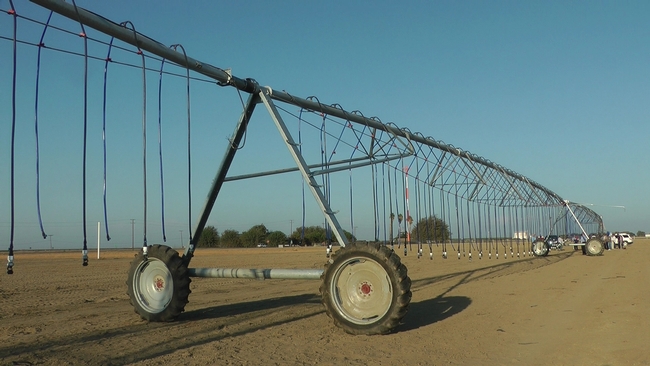Rain in December raised hopes for an end to the California drought, but storms have stayed away since the New Year began. January 2015 is shaping up to be the driest January since officials began keeping records 137 years ago, according to the National Weather Service.
California's continuing water crisis is leading to decreased and more variable water supplies for San Joaquin Valley farmers, and the region's forage production sector is being hit particularly hard.
“Corn silage and alfalfa have traditionally used lots of water and current and future water restrictions are forcing many farmers to rethink their forage production strategies,” said Jeff Dahlberg, UC Cooperative Extension specialist. “I know of one dairy that had to cut-off their summer irrigations of alfalfa to get their corn silage done.”
To help the agriculture industry make do with less water, a team of UC researchers began a long-term research project last year by growing alfalfa, sorghum and corn under a state-of-the-art center pivot irrigation system. The system, donated by industry partners, is installed at the UC West Side Research and Extension Center near Five Points. Reinke Inc. donated the center pivot, Senninger Irrigation donated nozzles, and Rain for Rent created the infrastructure that gets water and power to the 16-acre research plot.
“We see tremendous possibilities for overhead irrigation in cotton, alfalfa, corn, onions and wheat production,” said Jeff Mitchell, UC Cooperative Extension specialist and the project lead. “There is also great potential for overhead irrigation in California's $5 billion dairy industry for more efficiently producing feed crops like alfalfa, corn and sorghum.”
All aspects of production – including irrigation system performance, crop growth and development, weed control, water application, and economic viability – are being monitored by researchers from UC Cooperative Extension, Fresno State University and UC Davis, plus farmer cooperators and industry partners.
The primary focus of the study is comparing regular irrigation levels with regulated deficit irrigation, a system in which water is withheld at certain times in crop development in order to minimize crop losses even when water is short.

The researchers will apply small, precise amounts of water during the vegetative growth stage for sorghum and both immediately before and after monthly harvests and during the mid- to late-summer period for alfalfa when San Joaquin Valley productivity typically is reduced under flood irrigation.
“We expect to produce marketable and economic yields for sorghum using 25 percent less water as has been achieved under pivots in Texas and similar increases in crop water productivity for alfalfa,” Mitchell said. “This work will inform and improve future water management strategies in California.”
Overhead irrigation systems, such as center pivot systems, are the most prevalent form of irrigation nationwide; however, they have not been widely adopted in California to date. Recent technological advances in overhead irrigation – which allows integration of irrigation with global positioning systems (GPS) and management of vast acreage from a computer or smart phone – have boosted farmers' interest in converting from gravity-fed surface irrigation systems, which are still used on 5 million acres of California farmland.
The research is funded in part with a grant from the UC California Institute for Water Resources. In addition to Dahlberg and Mitchell, UC Cooperative Extension alfalfa specialist Dan Putnam and UCCE advisor in Fresno County Dan Munk are collaborators on the project.
An initiative to improve California water quality, quantity and security is part of the UC Division of Agriculture and Natural Resources Strategic Vision 2025.
Attached Images:
